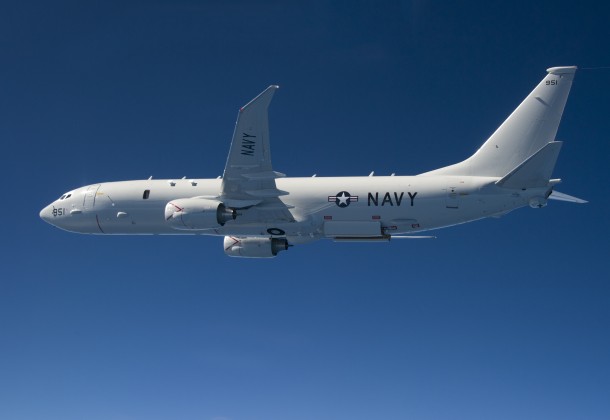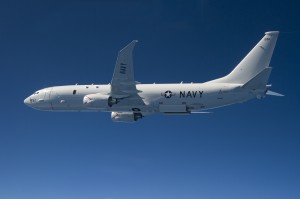Poseidon Heads Out to Sea


A P-8A Poseidon conducts open weapons bay door tests during a flutter exercise over the Atlantic Test Range. (U.S. Navy photo)
On Sept. 15, the bridge watch team aboard the guided-missile destroyer USS Laboon (DDG 58) observed as a P-8A Poseidon executed low level surveillance rigs at 500 feet with a speed of more than 300 knots.
This was the first coordinated test evaluation and training conducted between a surface ship and the new anti-submarine warfare (ASW) platform on the East Coast.
Laboon crewmembers had control of the Poseidon for four hours, providing safety of flight and a point of reference as they conducted radar and combat systems testing. The testing was part of establishing a maximum target detection range of various radar modes against a surface combatant.
“It was a really great feeling to be in control of an aircraft that is going to be the next best thing in the ASW world. You don’t get this kind of opportunity every day,” said Operation Specialist 2nd Class Michelle White, the ASW tactical air controller monitoring the Poseidon and who kept in constant communication with the aircraft and helped it navigate through air traffic.
“This P-8A test team and fleet coordinated test event brings the Poseidon one step closer to Initial Operational Capability in 2013,” said Neal Rothback, deputy program manager for the P-8A program.
The Poseidon is modified from the Boeing 737 and has the capabilities to drop and monitor sonobuoys. Its main mission is ASW and carries an armament of torpedoes, depth charges, anti-ship missiles, and other weapons. The Poseidon is equipped with an APY-10 radar as well as an ALQ-218 ESM system along with a camera that takes high definition videos.
Based out of Naval Air Station Patuxent River, Maryland, the test crew consists of Boeing and Navy contractors; VX-20 Sailors led by Cmdr. Jason Rider, chief test pilot for VX-20 and Cmdr. James Chitko; operations officer for the Integrated Test Team (ITT); and Mark Spencer, a senior Boeing test conductor.
Source: PMA-290 Public Affairs























